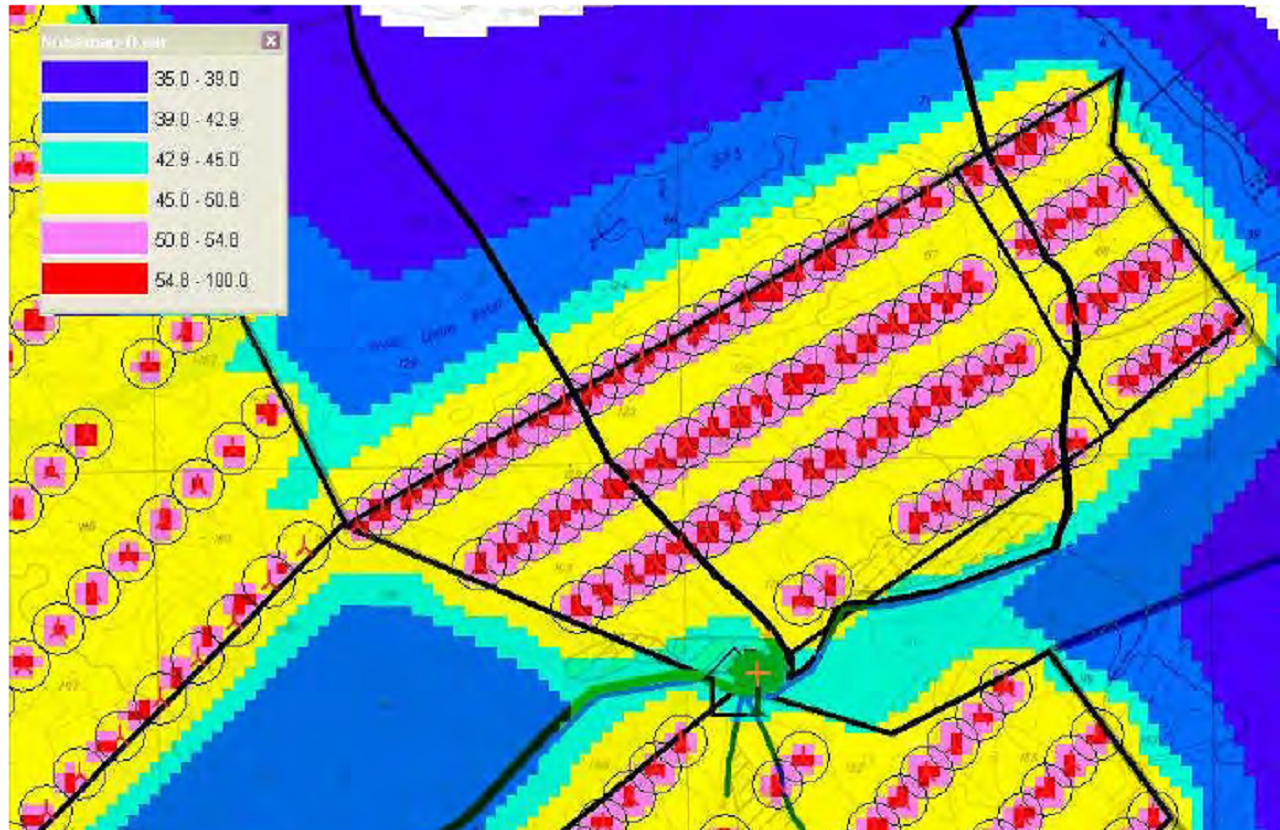Wind farm siting, i.e. the decision of where to place the wind farm we are working on, is obviously crucial: while many other aspects can be changed at a later date (turbine model, tower height, installed power, etc.) the choice of the area in which we want to install the wind farm cannot be changed.
Except in very special cases the developers of a wind farm will have to work on the authorisation of a project by placing the turbines in specific spots, or at most within a polygon. In the latter case, the developers have a certain area within which they will install the turbines.
In choosing the area, it is imperative to combine economic considerations (quality of wind in the area, ease of connection to the grid, distance from ports and communication routes) with socio-environmental considerations, seeking to achieve a delicate balance.
Environmental Impact Assessment
One of the key elements in the development of a wind power project is the Environmental Impact Assessment.
This is a document that, in one form or another, is drawn up in all countries where I have worked.
This document assesses in detail the potential effects of the wind farm on animal life, local habitats, ecosystems and local communities.
These studies assess impacts in two phases: during the construction phase (which normally lasts one or two years) and during the useful life of the wind farm (at least twenty years, but now usually more than thirty).
As far as animal life and habitats are concerned, one of the most well-known impacts of wind farms is the risk of impact between birds or bats and the turbines.
In addition, in various environmental impact studies I have read, the risks of potential disturbance during the breeding phase of animals (e.g. from noise, or the presence of personnel) were mentioned.
Another element that appears frequently in these studies is the fragmentation of the habitat, since a network of roads within the wind farm needs to be created.
The position of the turbines can help mitigate the impact. For example, in a wind farm I worked on in Egypt, the turbines created a kind of corridor designed to facilitate the passage of migratory birds.
Of course, this type of analysis can take several months (or even years), as it is often necessary to bring in specialists in the area to observe the fauna – which may vary with the seasons (think migratory birds).
The study of the noise that will be generated by the turbines is also carried out by specialists using special software.
The noise generated by turbines can be divided into two categories:
- aerodynamic noise (that generated by the wind interacting with various elements of the turbine)
- mechanical noise (generated by the gearbox, generator and internal motors that move the nacelle and blades).
Normally, aerodynamic noise is predominant. However, there are cases in which, normally due to a technical problem, turbines emit very annoying mechanical sounds.
Aerodynamic noise is generated mainly by the blades, towards the tip (where the relative air speed is greatest).
The substation also generates noise: if you stand close enough you will hear a ‘Hummmmm’ sound.
It is important to check what the starting noise level is: if it is a windy area, presumably you are already starting from a significant level (I remember a trip to Patagonia in an area that was so windy that it was difficult to talk).
For the visual impact, in addition to the presence of the turbines (which can be made less invasive, e.g. with proper colouring of the tower), it is important to mention shadow flickering.
This is an extremely annoying phenomenon: a shadow that appears briefly when a blade passes in front of the sun.
Shadow flickering is also an extremely complex phenomenon, which is studied by special software that evaluates the position of the sun and the observer and considers the local meteorology (e.g. days when the sun is covered by clouds).
Both noise and shadow flickering can be reduced by using software that slows down or stops the turbines at certain times of the day: there are often different limits for the maximum permissible noise during the day and during the night.
Topics related to archaeology are often dealt with in separate documents written by archaeologists.
Finally, an indispensable element of wind project development is proper management of the relationship with local communities.
The best developers hire specialists who contact all the inhabitants of the area (this is obviously a reasonably small number of people, since wind farms are not built in densely populated areas).
An attempt is then made to address the concerns of the local inhabitants, answering their questions and incorporating their needs into the project as far as possible.
Over the years, I have observed a significant number of projects that have failed because this point was underestimated.
If you are curious about what these documents look like, here is an example:

Leave a Reply